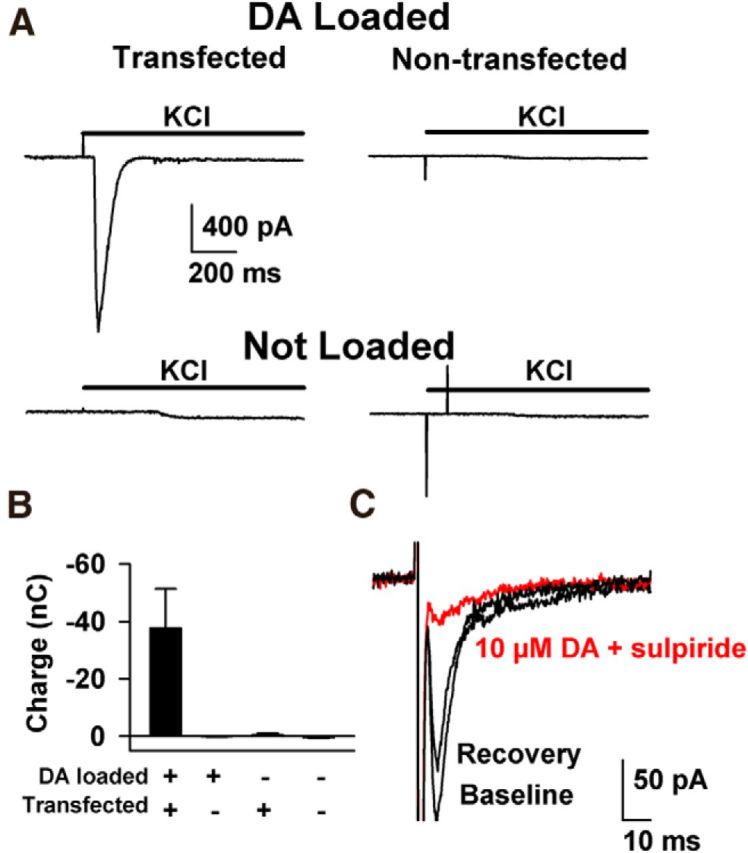Figure 4.

Hijacking striatal synapses to probe LGC-53 as a postsynaptic sensor. A, Cultured striatal neurons were transfected with LGC-53 plasmid DNA and marker GFP. At 10–12 d in vitro, the culture was loaded with 70 mm DA plus 30 mm KCl for 5 min to load striatal synapses with DA (Kim et al., 2000; Zhang and Zhou, 2002). Cells were then transferred to recording medium containing 1 μm NBQX, 5 μm gabazine, and 25 μm d-APV. GFP-expressing cells were clamped at −70 mV. The surrounding network was depolarized with 10 mm total KCl to reveal PSC-like events in transfected, DA-loaded cells but not other control conditions as indicated. B, Summary of the spiperone-sensitive charge obtained from the experimental conditions indicated (n = 7–15 cells per condition). In summary, 12 of 15 transfected cells showed a reversible, spiperone-sensitive response, whereas none of the 9, 8, and 7 cells in the three control conditions, respectively, yielded a response. C, Striatal cells were grown in microcultures as described previously (Moulder et al., 2007) and transduced with virus encoding LGC-53 and Venus. Cultures of one to three neurons were stimulated in the presence of GluR and GABAR blockers to obtain single-axon mediated PSCs, observed in a subset of transfected cells. Fast inward currents preceding the PSC are stimulation currents associated with depolarization. PSCs were sensitive to application of 10 μm DA plus 10 μm sulpiride to help suppress LGC-53 currents and block endogenous D2 presynaptic depression. The sulpiride and DA combination had no effect on autaptic GABA IPSCs (97 ± 5%; n = 7), suggesting no presynaptic effect of the mixture and suggesting that the suppression of LGC-53 PSCs results from DA-mediated suppression. For summary data, see Results.
